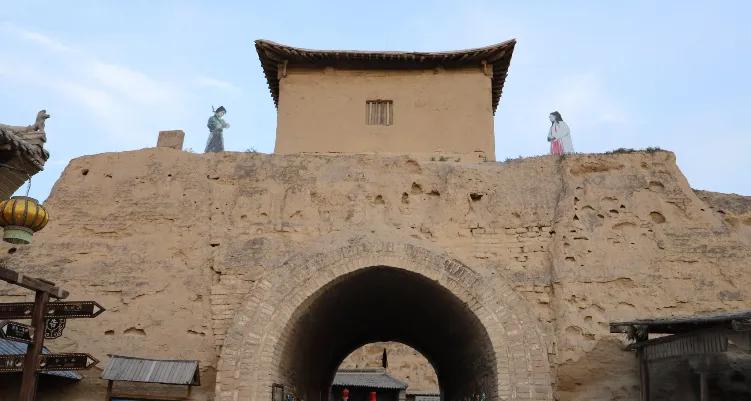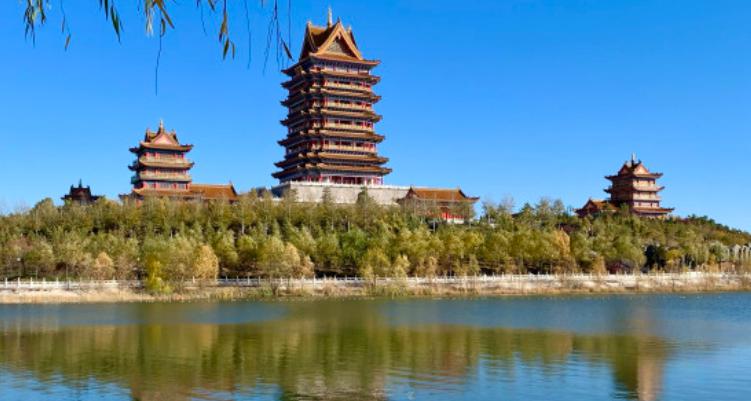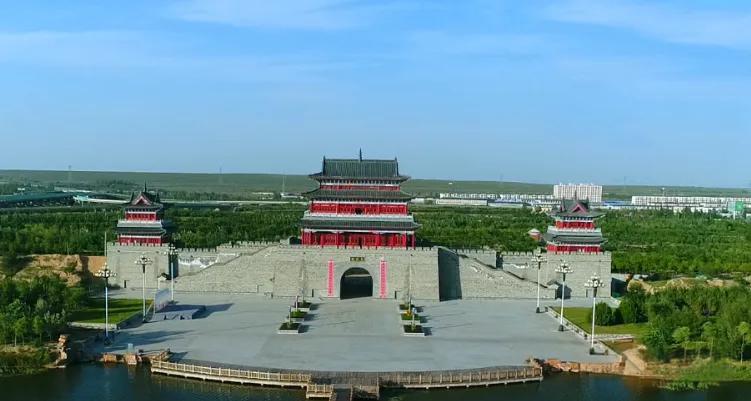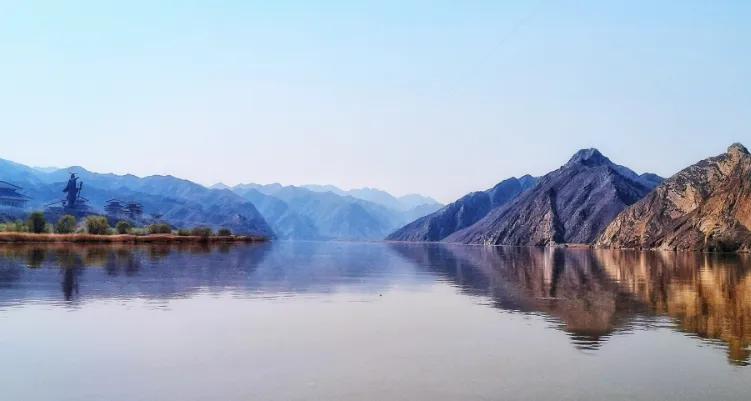1.Sand Lake

Sand Lake, located in Pingluo County, Shizuishan City, Ningxia Hui Autonomous Region, has both the grandeur of the desert and the beauty of the Jiangnan water town. It is known as a “rare” cultural tourist destination. Water is the soul of Sand Lake, and sand is the style of water. Sand Lake cleverly combines lake water, desert, and reeds, and each scene is unique and amazing.
2.Shapotou

Shapotou Scenic Area is located in the western part of Zhongwei City, Ningxia Hui Autonomous Region. It is backed by the majestic Xiangshan Mountain, a remnant of the Qilian Mountains, in the south, and connected to the Tengger Desert in the north. The middle is crossed by the rushing Yellow River. It combines the desert, the Yellow River, the mountains and the oasis into one, with the majestic scenery of the Northwest and the beautiful scenery of the south of the Yangtze River.
3.Shuidonggou

Shuidonggou Scenic Area is located in Linhe Town, Lingwu City, Ningxia Hui Autonomous Region. It is located on the southern edge of the Ordos Terrace, in the desert area where the Maowusu Desert borders the Loess Plateau, and is a Yadan landform. Shuidonggou is the earliest excavated Paleolithic cultural site in China. It is known as the “birthplace of Chinese prehistoric archaeology” and “a historical witness of cultural exchanges between China and the West.” The Shuidonggou area is also a grand view of military defense buildings such as the ancient Great Wall, beacon towers, castles, trenches, and towers in northern my country during the Ming Dynasty.
4.Zhenbeibao Western Film and Television City

Zhenbeibao Western Film City, located in Xixia District, Yinchuan City, Ningxia Hui Autonomous Region, is characterized by its simplicity, primitiveness, ruggedness, desolateness and folkness. It was once the heart of the ancient Xixia Dynasty. In this ancient city, there are still two ancient castle ruins, namely Zhenbeibao Ancient City. Classic films such as “The Shepherd”, “Red Sorghum”, “A Chinese Odyssey”, “The Tomb of the Emperor”, and “The Imperial Guards” were filmed here.
5.Helan Mountains

Helan Mountain Scenic Area is located in Yinchuan City, Ningxia Hui Autonomous Region. “Drive a long car and break through the gap in Helan Mountain”. Helan Mountain is famous for Yue Fei’s “Man Jiang Hong”. The eastern part is a semi-agricultural and semi-pastoral area, and the western part is a pure pastoral area. In the eastern part of Helan Mountain, there are Helan Mountain rock paintings left by nomadic people thousands of years ago, Suyukou National Forest Park, which is rare in the arid northwest region, the twin towers of Baisikou Ancient Pagoda of the Western Xia Dynasty, the palace of Li Yuanhao, the founding emperor of the Western Xia Dynasty, and the remains of the Great Wall of the Ming Dynasty.
6.Western Xia Royal Tombs

The Western Xia Tombs, located in Yinchuan, Ningxia Hui Autonomous Region, is one of the largest and most complete imperial mausoleums in China, and is also the largest existing Western Xia cultural site. After the fall of the dynasty, the cities and history of Western Xia mysteriously disappeared in the Gobi Desert, becoming an eternal mystery that was not discovered until modern times. The Western Xia Museum houses a wealth of cultural relics from the Western Xia Dynasty, many of which are treasures, including stone carvings in Western Xia script and murals in Western Xia style.
7.Huanghe Hengcheng

Huanghe Hengcheng Tourist Resort, located in Yinchuan, Ningxia Hui Autonomous Region, is a tourist area integrating sightseeing, self-driving entertainment, and leisure vacation. “As early as the Western Xia period, this was the ancient ferry crossing of Shunhua, with a history of more than 1,000 years. Hengcheng Castle, built in the fifth year of Zhengde in the Ming Dynasty (1510 AD), is a strategic defense system of the Great Wall to resist the invasion of northern ethnic minorities and is close to the Yellow River.
8.Mingcui Lake

Mingcui Lake National Wetland Park, located in Zhangzheng Town, Xingqing District, Yinchuan City, Ningxia Hui Autonomous Region, is the third national wetland park named by the State Forestry Administration after Qinhu Lake in Jiangsu and Xixi National Wetland Park in Hangzhou. It is also the first national wetland park in the Yellow River Basin and western China, and enjoys the reputation of “one of the six most beautiful wetland parks in China”. The scenic area integrates the Loess Plateau, the Yellow River, lakes, reeds, wetlands and other landscapes. It does not look like the Northwest, but more like somewhere in the south of the Yangtze River.
9.Huangsha Ancient Ferry

Huangsha Ancient Ferry Original Ecological Tourism Scenic Area is located in Xingqing District, Yinchuan City, Ningxia Hui Autonomous Region. Huangsha Ancient Ferry is an ancient ferry crossing on the Yellow River and one of the eight scenic spots in Ningxia during the Ming and Qing Dynasties. Here, you can personally visit the ancient ferry crossing where Emperor Kangxi crossed the Yellow River, and the Crescent Lake where Emperor Zhaojun and his wife stayed in the desert. The desert scenery, the ancient charm of the Yellow River, the natural wetlands, and the wonders of the Yellow Sands embracing the long river in the park are a good place for an original ecological self-guided tour. The ancient sheepskin rafts, the primitive desert boat camels, the modern wetland dragon boats, and the exciting sand sea surfing make it a fun place.
10.Liupan Mountain

Liupanshan National Forest Park is located in Jingheyuan Town, Jingyuan County, Guyuan City, Ningxia Hui Autonomous Region. Liupanshan is the combination of the Central Plains farming culture and the northern nomadic culture. It is a must-pass place on the northern route of the eastern section of the ancient Silk Road. It is also a military fortress that has been fought for by military strategists throughout the ages. It is also the birthplace of “Qingpingle·Liupanshan”. The main attractions include Xiaonanchuan, Liangdianxia, Erlong River and other attractions.
11.Flint Village

Huoshizhai National Geological (Forest) Park is located in Xiji County, Guyuan City, Ningxia Hui Autonomous Region. It is called Huoshizhai because the rocks on the mountain are dark red, especially under the shade of green trees, like burning flames. It is the largest Danxia landform distribution area in northern China and the highest Danxia landform group discovered in China so far.
12.Sands Island

The Jinsha Island Scenic Area of Tengger Desert Wetland is located in Zhongwei City, Ningxia Hui Autonomous Region. It is an oasis in the desert. It is shaded by green trees, lush wetland vegetation, and large areas of lavender. Every spring and autumn, many rare migratory birds come here. The scenic area has eight areas: wetland sightseeing area, ecological sightseeing area, special dining area, conference reception area, sports and leisure area, and health and physiotherapy area.
13.China Yellow River Building

The Yellow River Tower is located on the west bank of the Yellow River in Qingtongxia, Wuzhong City, Ningxia Hui Autonomous Region. It is a landmark building in the urban belt along the Yellow River created by Ningxia Hui Autonomous Region. It is the first building in China to showcase the Yellow River culture. It is also known as one of the four famous towers in China along with the Yellow Crane Tower, Tengwang Pavilion and Guanque Tower. The entire Yellow River Tower is like an island, surrounded by water and bordering the Yellow River on the east.
14.Yanzhou Ancient City

Yanzhou Ancient City, located in Yanchi County, Wuzhong City, Ningxia Hui Autonomous Region, is a “red, green, ancient, and folk” cultural tourism integration block that integrates historical and cultural sightseeing, red research, folk culture experience, and ecological leisure. It has attractions such as the Great Wall Pass, Ningxia Great Wall Museum, “Jiuqu” Folk Culture Park, and Huamachi Ancient City.
15.Haba Lake

Haba Lake National Nature Reserve: Located in Yanchi County, Wuzhong City, Ningxia Hui Autonomous Region, it is a natural “biological gene bank” in the northern desert. The scenic area is a blend of mountains, sand and water, with lush trees, majestic sand dunes, vast grasslands, soft and wide beaches, clear blue lakes, charming scenery and magnificent views. The main features are biodiversity, beautiful deserts, and wetland lakes.
16.Qingtongxia Yellow River Grand Canyon

Qingtongxia Yellow River Grand Canyon, located in Qingtongxia Town, Qingtongxia City, Wuzhong City, Ningxia Hui Autonomous Region, is a Yellow River canyon scenic spot composed of limestone and sandstone. “The Yellow River makes Ningxia rich, and Qingtongxia is the pearl of the frontier”. “Ten-mile long gorge, the soul of the Yellow River”, Qingtongxia Yellow River Grand Canyon is the last canyon in the upper reaches of the Yellow River. The steep Helan Mountains and the Niu Shou Peaks form a picture of the mountains, and the high gorges and lakes and the deep valleys and turbulent waters merge into a symphony of water.
